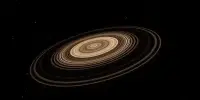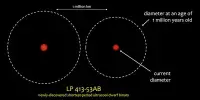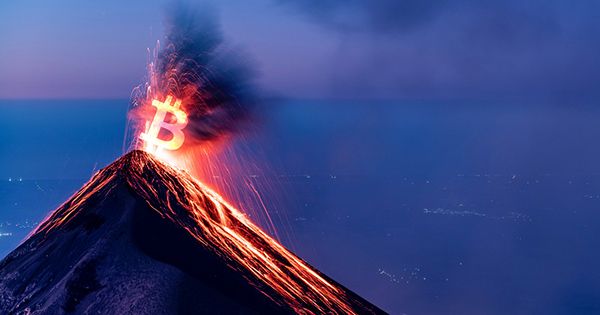Galactic bubbles are fascinating structures in the universe, and their complexity exceeds expectations. Galactic bubbles are massive structures made up of hot, ionized gas that surround and extend beyond galaxies. They are frequently observed in active galaxies, where intense processes such as supermassive black hole activity or vigorous star formation can generate large amounts of energy.
Astronomers have discovered new information about the properties of the massive bubbles of high-energy gas that extend far above and below the center of the Milky Way galaxy. A team led by scientists at The Ohio State University was able to show that the shells of these structures – dubbed “eRosita bubbles” after being discovered by the eRosita X-ray telescope – are more complex than previously thought in a study recently published in Nature Astronomy.
Although they resemble Fermi bubbles in shape, eRosita bubbles are larger and more energetic than their counterparts. Because of their size and location, the “galactic bubbles” provide an exciting opportunity to study star formation history and reveal new clues about how the Milky Way came to be, according to Anjali Gupta, lead author of the study and a former postdoctoral researcher at Ohio State who is now a professor of astronomy at Columbus State Community College.
These bubbles can be found in the gas that surrounds galaxies, a region known as the circumgalactic medium.
Our goal was really to learn more about the circumgalactic medium, a place that is very important in understanding how our galaxy formed and evolved. A lot of the regions that we were studying happened to be in the bubble region, so we wanted to see how different the bubbles are when compared to the regions that are not in the bubble.
Anjali Gupta
“Our goal was really to learn more about the circumgalactic medium, a place that is very important in understanding how our galaxy formed and evolved,” Gupta explained. “A lot of the regions that we were studying happened to be in the bubble region, so we wanted to see how different the bubbles are when compared to the regions that are not in the bubble.”
Previous research assumed that these bubbles were heated by the shock of gas blowing outward from the galaxy, but the main findings of this paper suggest that the temperature of the gas within the bubbles isn’t significantly different from the temperature outside of it.
“We were surprised to find that the temperature of the bubble region and out of the bubble region were the same,” said Gupta. Additionally, the study demonstrates that these bubbles are so bright because they’re filled with extremely dense gas, not because they are at hotter temperatures than the surrounding environment.
Gupta and Smita Mathur, co-author of the study and a professor of astronomy at Ohio State, did their analysis using observations made by the Suzaku satellite, a collaborative mission between NASA and the Japanese Aerospace Exploration Agency.
Researchers were able to characterize the diffuse emission (the electromagnetic radiation from very low density gas) of galactic bubbles as well as the other hot gases that surround them by analyzing 230 archival observations made between 2005 and 2014.
Although the origin of these bubbles has been debated in scientific literature, Mathur believes that this study is the first to begin to settle the issue. Because the researchers discovered an abundance of non-solar neon-oxygen and magnesium-oxygen ratios in the shells, their findings strongly suggest that galactic bubbles were formed by nuclear star-forming activity, or the injection of energy by massive stars and other types of astrophysical phenomena, rather than supermassive black hole activity.
“Our data supports the theory that these bubbles are most likely formed as a result of intense star formation activity at the galactic center, rather than black hole activity,” Mathur said. The team hopes to use new data from other upcoming space missions to continue characterizing the properties of these bubbles, as well as work on novel ways to analyze the data they already have, to further investigate the implications of their discovery for other aspects of astronomy.
“Scientists really need to understand the formation of the bubble structure,” Gupta said. “By using different techniques to improve our models, we’ll be able to better constrain the temperature and emission measures that we’re looking for.”
















